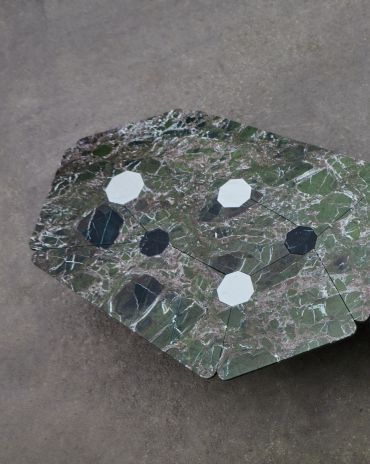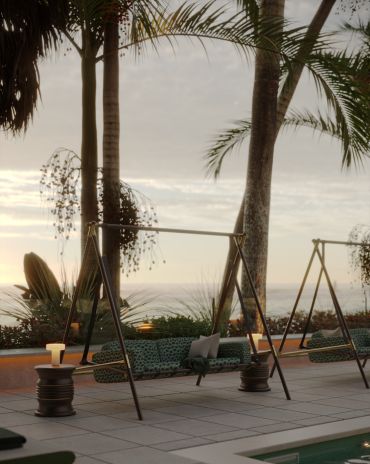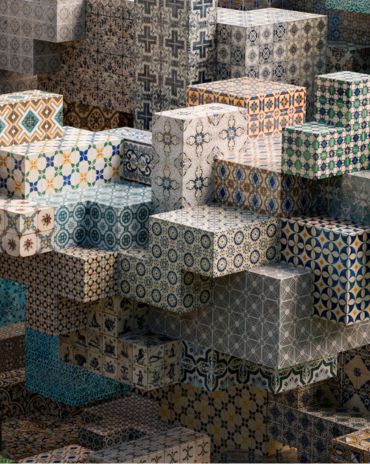Copyright © 2025 Motivate Media Group. All rights reserved.
The Pedrali Pavilion combines beauty, tradition and innovation
Pedrali Pavilion celebrates 60 years of the brand.

In a remarkable celebration of 60 years of rich history, Italian furniture manufacturer, Pedrali, has opened its doors to the world with the unveiling of the breathtaking Pedrali Pavilion. Designed by AMDL CIRCLE and the renowned architect Michele De Lucchi, this architectural beauty was inaugurated this year at the company’s headquarters in Mornico al Serio, Bergamo. Alongside this grand pavilion, an enthralling exhibition titled ‘Pedrali60, we design a better future’ is now on display, curated by Luca Molinari Studio. This milestone commemorates not just six decades of remarkable craftsmanship but also the company’s unwavering commitment to delivering quality furniture that graces our homes and workplaces with timeless beauty.


The heart of this jubilant celebration is the Pedrali Pavilion, a creation by AMDL CIRCLE and Michele De Lucchi. Situated in the company’s very headquarters in Mornico al Serio, it serves as a warm and welcoming home that embraces the legacy of this remarkable anniversary. It is a place where the company’s history-makers and the new generations can come together to share in the rich heritage and inspiring visions. The Pedrali Pavilion represents a reconnection to the company’s roots and the surrounding environment.
The Pedrali Pavilion unfolds with a large raised roof housing two exhibition levels. The first floor showcases “Pedrali60, we design a better future,” an exhibition curated by Luca Molinari Studio. As visitors climb the entrance staircase, they find themselves at a platform designed not only for accessing the exhibition but also for rest and participation in presentations and talks. The top of the stairs reveals a wing that houses the reception area and offers a tantalizing glimpse of what lies ahead. It’s here, suspended between the arches, that the journey into Pedrali’s history begins.




The exhibition unfurls along two wooden panels, progressively recounting the company’s six-decade journey through voices of key figures, prototypes, graphic designs, catalogs, and pivotal projects that have fueled Pedrali’s growth. Luca Molinari, the curator, notes that the exhibition “offers a critical re-interpretation of an important element of Italy’s design scene, and a look to the future drawing on Pedrali’s strong entrepreneurial and innovative drive.”
Physical objects on one side of the double-sided panels and monitors displaying the voices of the Pedrali community on the other create a rich tapestry of the company’s history. Wooden pedestals positioned between the arched portals shine a spotlight on the most iconic design pieces, highlighting the expertise and production skills of this 100% Made in Italy company. The journey culminates at the open end of the gallery, symbolizing an invitation to look ahead and embrace the future.
A second staircase leads visitors to the ground floor portico, where the exhibition continues. This space takes inspiration from the loggias of ancient public buildings in northern Italian towns. It invites visitors to reflect on their role in maintaining the fragile balance of our planet. A metaphorical forest of mirrors is interspersed with panels featuring the faces and words of the passionate individuals who contribute to the Pedrali community. This immersive layout allows visitors to lose themselves in a magical forest where their own reflections merge with those who work at Pedrali today, forming a prismatic portrait of a community that continues to expand and evolve.
The Latest
Winner’s Panel with IF Hub
identity gathered for a conversation on 'The Art of Design - Curation and Storytelling'.
Asterite by Roula Salamoun
Capturing a moment of natural order, Asterite gathers elemental fragments into a grounded formation.
Maison Aimée Opens Its New Flagship Showroom
The Dubai-based design house opens its new showroom at the Kia building in Al Quoz.
Crafting Heritage: David and Nicolas on Abu Dhabi’s Equestrian Spaces
Inside the philosophy, collaboration, and vision behind the Equestrian Library and Saddle Workshop.
Contemporary Sensibilities, Historical Context
Mario Tsai takes us behind the making of his iconic piece – the Pagoda
Nebras Aljoaib Unveils a Passage Between Light and Stone
Between raw stone and responsive light, Riyadh steps into a space shaped by memory and momentum.
Reviving Heritage
Qasr Bin Kadsa in Baljurashi, Al-Baha, Saudi Arabia will be restored and reimagined as a boutique heritage hotel
Alserkal x Design Miami: A Cultural Bridge for Collectible Design
Alserkal and Design Miami announce one of a kind collaboration.
Minotticucine Opens its First Luxury Kitchen Showroom in Dubai
The brand will showcase its novelties at the Purity showroom in Dubai
Where Design Meets Experience
Fady Friberg has created a space that unites more than 70 brands under one roof, fostering community connection while delivering an experience unlike any other
Read ‘The Winner’s Issue’ – Note from the editor
Read the December issue now.
Art Dubai 2026 – What to Expect
The unveils new sections and global collaborations under new Director Dunja Gottweis.
















